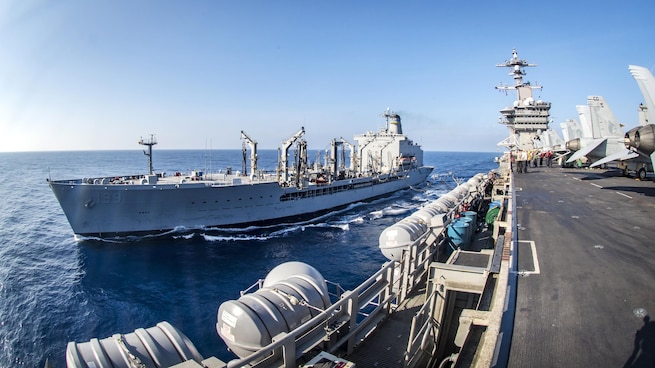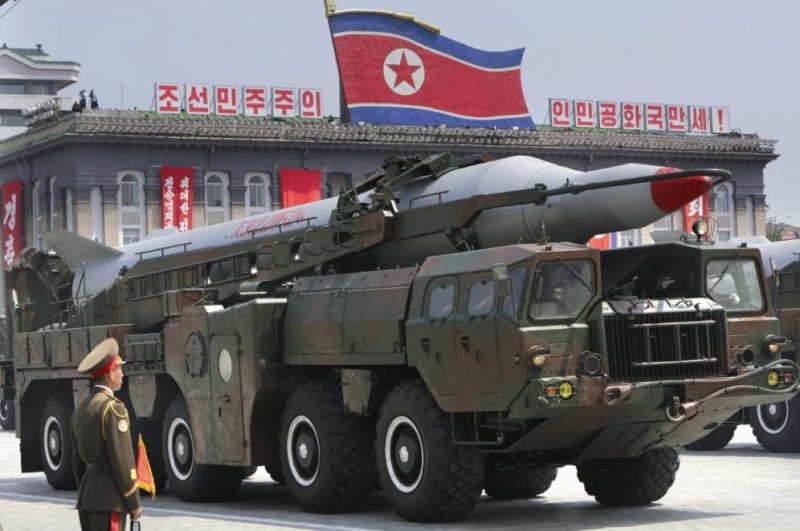 Haftar was protected by and lived in the U.S., becoming a citizen. We dispatched him to Libya to launch an interim government. Now he and Egypt both have turned to Russia for full control and support, Putin has complied, happily. John Kerry, Hillary Clinton and Barack Obama are not responding to calls on line 4. Hah…
Haftar was protected by and lived in the U.S., becoming a citizen. We dispatched him to Libya to launch an interim government. Now he and Egypt both have turned to Russia for full control and support, Putin has complied, happily. John Kerry, Hillary Clinton and Barack Obama are not responding to calls on line 4. Hah…
BBC: Forces loyal to Libyan military strongman Khalifa Haftar say they have retaken key oil-rich areas in the country’s east.
Ground, sea and air forces were engaged in the fight for sites at Ras Lanuf, Sidra and Ben Jawad from a rival Islamist militia, a spokesman said.
Meanwhile, Russia has denied reports that it has deployed special forces to the region in support of Gen Haftar. {See below, emphasis added}
Libya has been in chaos since the overthrow of Colonel Gaddafi in 2011.
The oil terminals had been seized by the Benghazi Defence Brigades (BDB) – a mix of militias that includes Islamists – earlier this month, which then handed them over to the Petroleum Facilities Guard, affiliated to the UN-backed unity government based in Tripoli.
Gen Haftar is allied to an administration based in the eastern city of Tobruk, which is challenging the authority of the UN-backed government.
Russia moving special forces into Libya
U.S., Egyptian and diplomatic sources say that Russia has apparently been moving special forces to an airbase in western Egypt near the border with Libya in recent days, according to a report by Reuters.
Newsweek
The U.S. is concerned that such a Russian deployment may signify Russian support for Libyan military commander Khalifa Haftar, who suffered a setback on March 3 when the Benghazi Defense Brigades (BDB) attacked oil ports controlled by his forces.
U.S. officials claimed that their surveillance units had observed Russian special operations forces and unmanned aircraft at Sidi Barrani, which is about 100 km from the Egypt-Libya border. The apparent Russian deployments have not been previously reported.
The Russian defense ministry did not respond to these claims on Monday and Egypt denied the presence of any Russian contingent on its soil.
Mohamed Manfour, commander of the Benina air base near Benghazi in Libya, denied that Haftar’s Libyan National Army (LNA) had received military assistance from the Russian state or from Russian military contractors, and said there were no Russian forces or bases in eastern Libya.
Over the past two years a number of Western countries, including the U.S., have sent special operations forces and military advisors into Libya. The U.S. also carried out air strikes to support a successful Libyan campaign last year to oust ISIS from its stronghold in the city of Sirte.
Russia has shown increasing involvement in Libya in recent months and appears to be taking steps to back Haftar to lead the battle-torn kingdom, which has been split between local warlords in the aftermath of a 2011 NATO-backed uprising against the late leader Muammar Gaddafi, who was an ally of Russia. Several dozen armed private security contractors from Russia operated until February in a part of Libya that is under Haftar’s control.
The top U.S. military commander overseeing troops in Africa, Marine General Thomas Waldhauser, told the U.S. Senate last week that Russia was trying to exert influence in Libya to strengthen its leverage over whoever ultimately holds power.
“They’re working to influence that,” Waldhauser told the Senate Armed Services Committee on Thursday. Asked whether it was in the U.S. interest to let that happen, Waldhauser said: “It is not.”
Russian involvement in Libyan affairs appears to be growing at a time when it is limiting its operations in Syria to attempts to force a resolution without taking charge of the country. Waldhauser believes that this is Russia’s eventual goal in Libya, which will enable it to gain leverage there in the event that Haftar gains control of the country. It is also eyeing Libya’s oil fields as a source of economic opportunities.
Russia, however, says that its primary objective in the Middle East is to contain the spread of violent Islamist groups.
Meanwhile who is Khalifa Belqasim Haftar? (Wikipedia file)
Haftar was born in eastern Libya. He served in the Libyan army under Muammar Gaddafi, and took part in the coup that brought Gaddafi to power in 1969. He commanded the Libyan contingent against Israel in the Yom Kippur War of 1973.[3] In 1987, he became a prisoner of war during the war against Chad. While held prisoner, he and his fellow officers formed a group hoping to overthrow Gaddafi. He was released around 1990 in a deal with the United States government and spent nearly two decades in the United States, gaining U.S. citizenship.[4] Haftar lived comfortably in Virginia, relatively close to CIA headquarters, from the early 1990s until 2011.[5] In 1993, while living in the United States, he was convicted in absentia of crimes against the Jamahiriya and sentenced to death.
Haftar held a senior position in the forces which overthrew Gaddafi in the 2011 Libyan Civil War. In 2014 he was commander of the Libyan Army when the General National Congress (GNC) refused to give up power in accordance with its term of office. Haftar launched a campaign against the GNC and its Islamic fundamentalist allies. His campaign allowed elections to take place to replace the GNC, but then developed into a civil war.
Haftar’s campaign attracted opponents to the GNC to join him as well as armed groups including Zintan‘s al-Qaqaa and Sawaaq brigades, regional military police, the Saiqa special forces group in Benghazi, the Libyan air force and Ibrahim Jadhran’s federalist militias.[6]
Haftar has been described as “Libya’s most potent warlord,” having fought “with and against nearly every significant faction” in Libya’s conflicts, and as having a “reputation for unrivalled military experience”.
***
Internal rivalries based on region, city, tribe, political factions, ethnicity, and militia membership have supplanted dictatorial repression. The costs of this multi-layered disunity are stark: Libya has lost billions of dollars in potential revenues due to fights over control of the oil sector. And nearly 5,000 people have been killed due to the instability since 2014, when Libya formally divided politically.
Perhaps the most immediate barrier to implementation is the role of General Khalifa Haftar, commander of the Libyan National Army (LNA). Although Secretary of State John Kerry did not mention him by name in his statement in Vienna after the meeting to support Libya on May 16, Haftar was clearly on his mind when he said battles of individuals serving their own interests undermined Libya’s security, and that Libya was at a crossroads between a fate of chaos fueled by personal rivalries or unity and peace. Article Eight of the current agreement stipulates that the Presidency Council should be the Supreme Commander of the Libyan Army, in control of all senior-level security official appointments and dismissals. In effect, this provision would give the Presidency Council control of Haftar’s fate. The pro-Haftar eastern government has made removal of this article one of its few conditions for recognizing the Government of National Accord (GNA).
This impasse underscores the need for Libyans to decide once and for all what relationship the military should have with civilian institutions in Libya, and specifically what role Haftar can or will play in the future of Libya. This has also been a difficult impasse for Western governments to navigate, harkening to a recurring Middle East policy battle between prioritizing counter-terrorism and security, and longer-term interests like political stability, rule of law and human rights. Haftar has contributed to counter-terrorism efforts against groups like Islamic State, especially in Benghazi, while undermining Libya’s long-term stability. More here from May of 2016.








